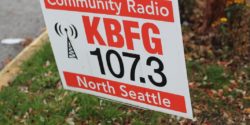Tucked away in a shed in a northwest Seattle neighborhood was perhaps the tiniest radio station that I’d ever seen: community radio station KBFG-LP. Part of the most recent wave of low power FM stations, it launched in December, 2017 and broadcasts for a 2.5 mile radio to a potential FM audience of around 250,000 people in the Ballard, Fremont and Greenwood neighborhoods (thus the B-F-G call letters).
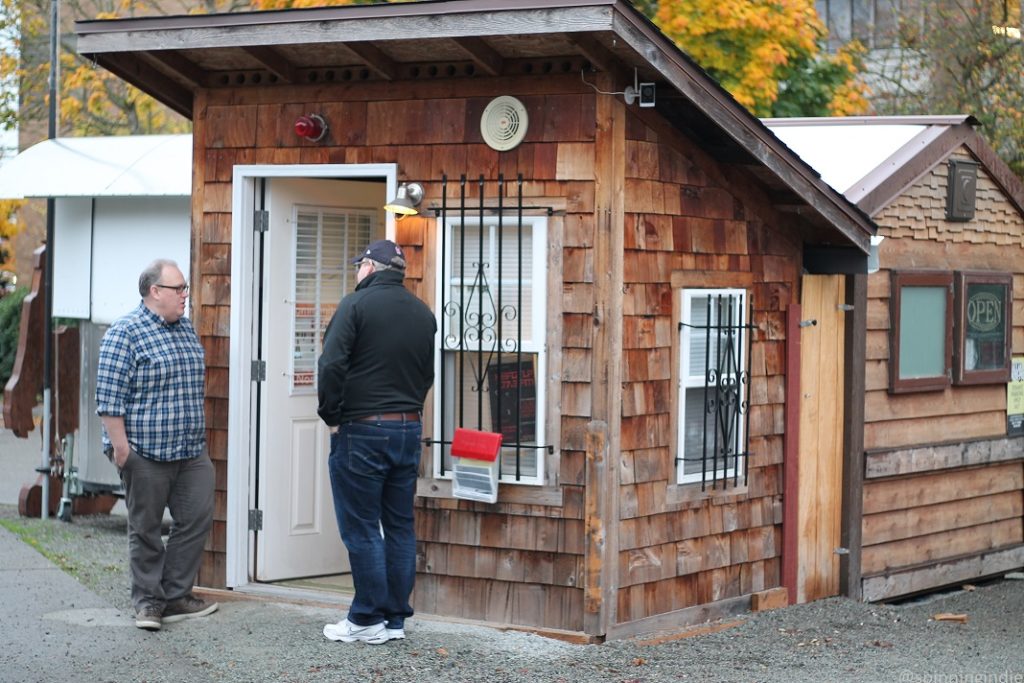
Radio Survivor readers will recall that my colleagues Eric and Paul attended KBFG’s launch party, interviewing several of its founders for Radio Survivor Podcast #124. That event was also featured in a big story about low power FM in the New York Times, lending some incredible early attention to the station.
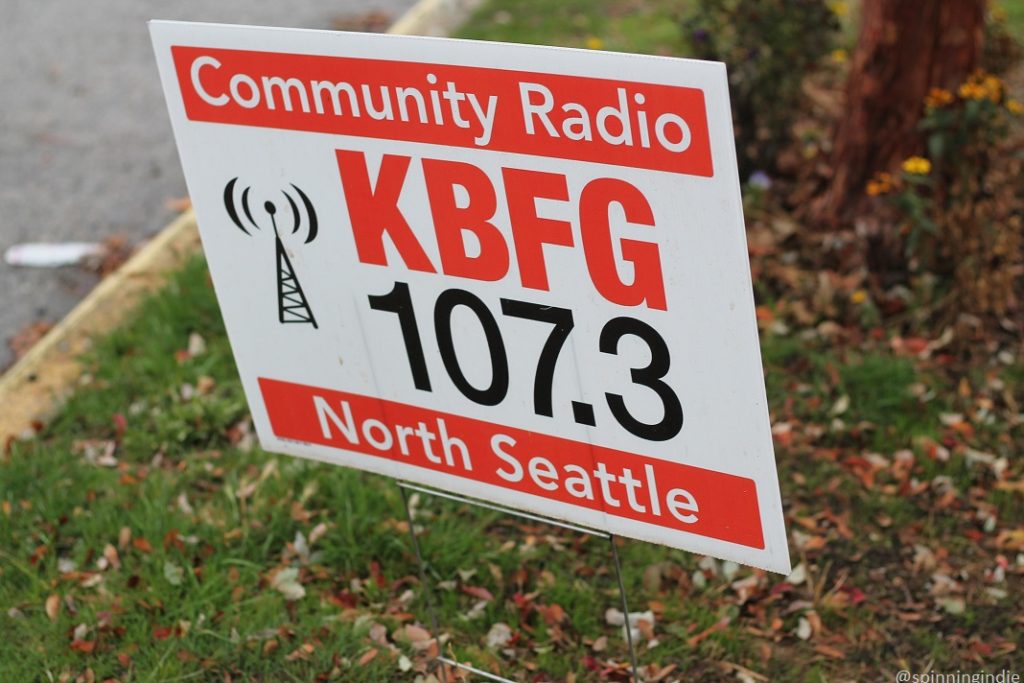
Thanks to the wonders of technology, KBFG-LP was able to take to the airwaves before it had a public-facing studio, with programmers submitting their shows remotely. Within a year, it opened “The Shack,” in Seattle’s Ballard neighborhood. The mini studio was housed in a pre-fabricated building that I was told was really designed as a lawnmower shed. Nestled behind a coffee stand and steps away from a dumpster on a Ballard corner, it was a funky location that truly spoke to KBFG’s hyper-local, neighborhood ethos.
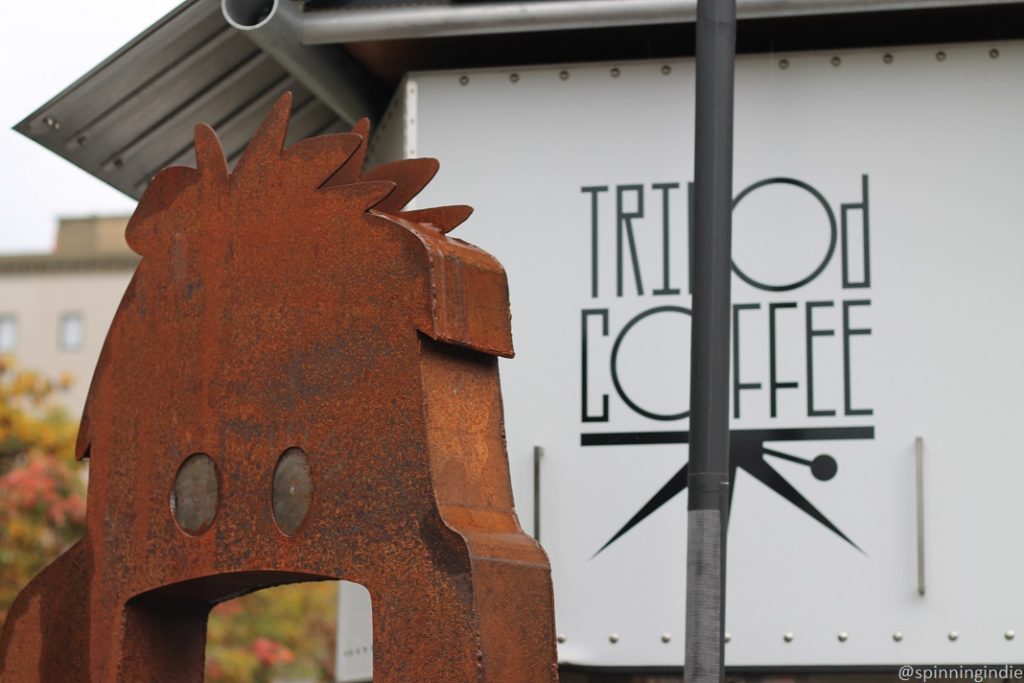
On a rainy afternoon in late October, 2018, I ventured to “The Shack” to check out the station. With room for approximately two people in the studio, part of the visit was spend lingering outside under umbrellas. As I spoke with Fulcrum Community Communications (KBFG’s non-profit license-holder) board member Jerry Russell, his fellow board member Pamela Burton arrived for a separate interview. I was curious how we’d all manage the space constraints and watched in awe as she invited the guest into her car for the conversation, while I chatted with Russell in the small studio. Clearly this is a crew that is used to managing with limited resources.
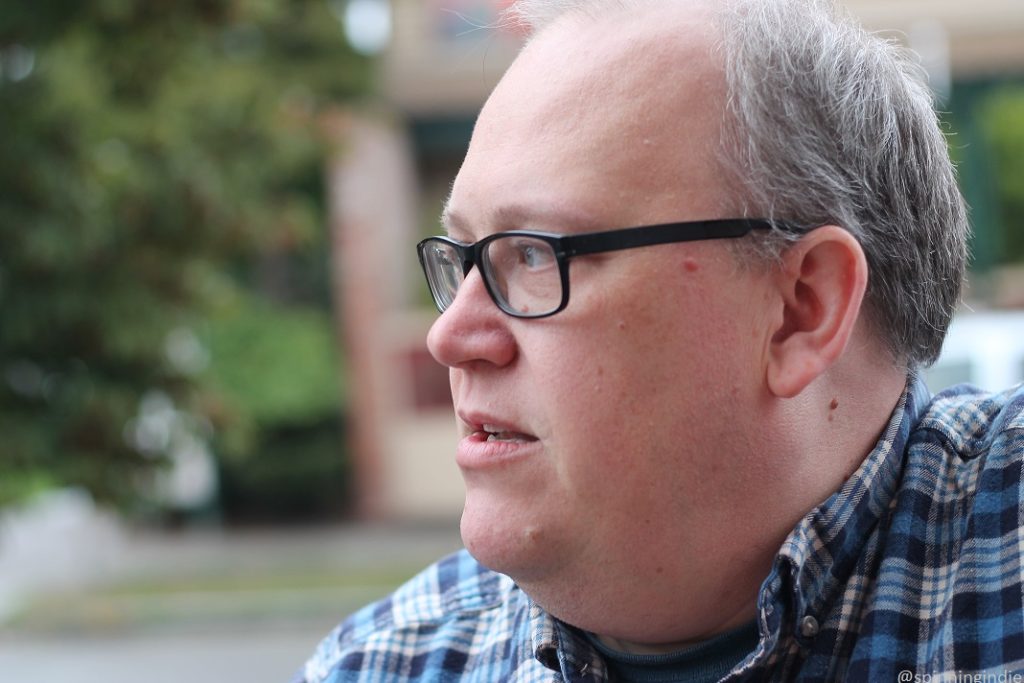
At the time of my visit, the Shack had been up and running for about six months, with a couple of shows broadcasting live from the cozy studio, including a Sunday evening show called “Night Sweats.” Other volunteers used the Shack to pre-record their shows or conduct interviews that would air at a later time. Russell explained that the Shack was outfitted with “bare bones” equipment while KBFG awaited an eventual move to a bigger space.
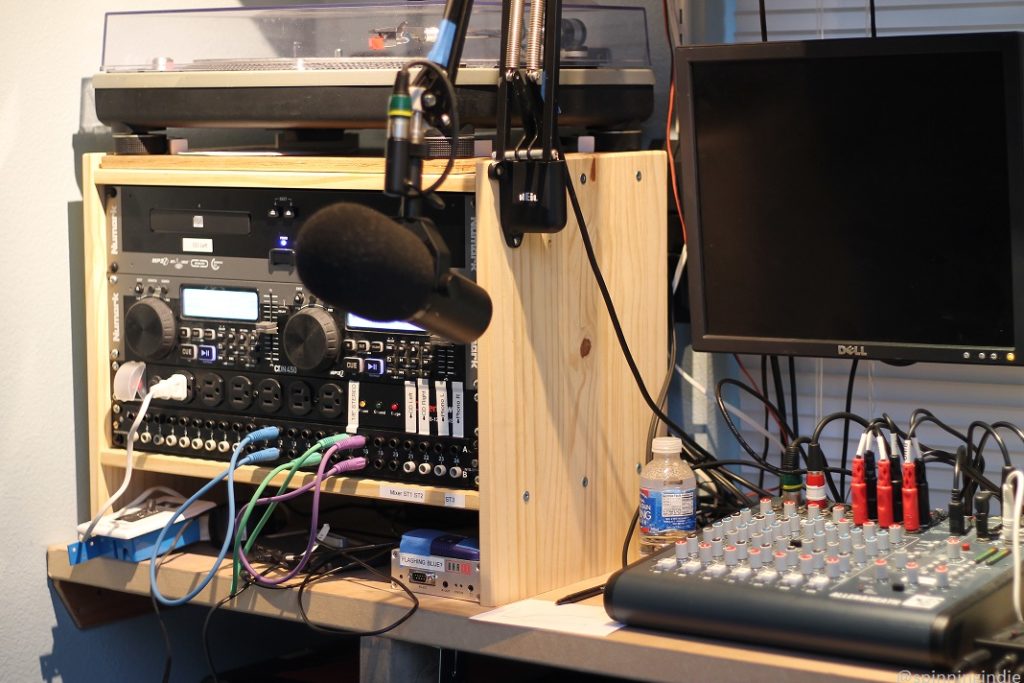
A light outside the door of the Shack alerted passersby that the station was on the air and speakers could also be set up to play KBFG to folks hanging out in the adjacent triangular gravel-filled space. While it was quiet (except for the “45rpm” show of 1940s and 1950s music playing from automation in the background) and rainy on my visit, I was told that during summer months there were picnic tables and a food truck parked outside, creating an even more convivial atmosphere
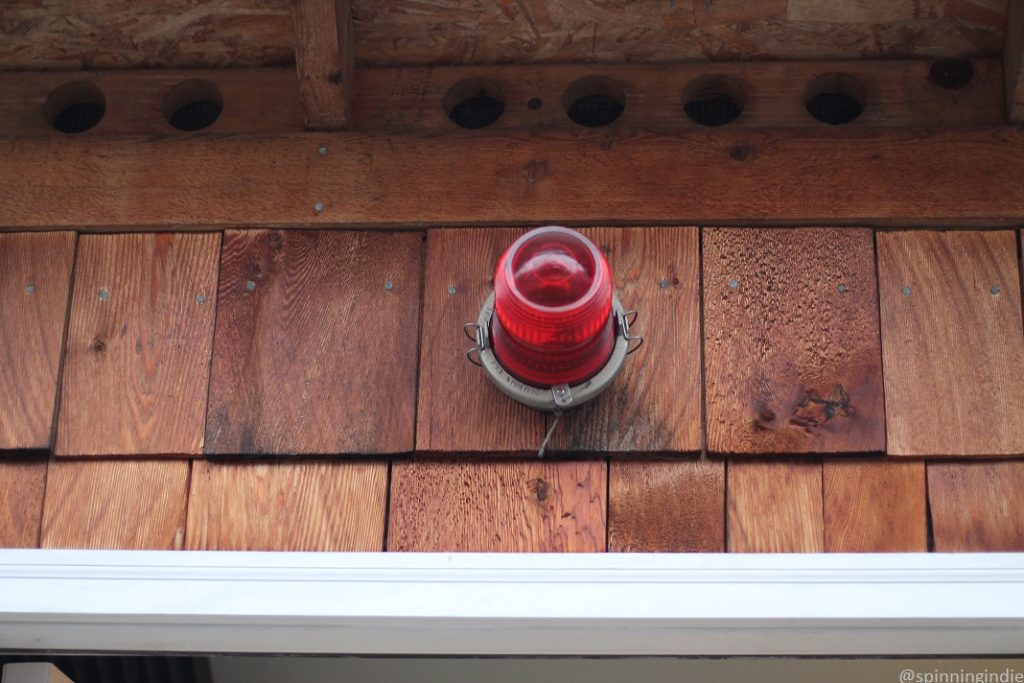
Earlier in the day, I got my first taste of KBFG during the Halloween event/food drive, Hunger Goblin’ Treat or Treat, in a nearby neighborhood. The station set up a remote outpost in the corner of a bank, with windows facing a busy daytime trick-or-treating route. The costumed father-son DJ duo played spooky tunes and chimed in with running commentary about the ghouls, goblins, TV characters, and other revelers spotted during the event.
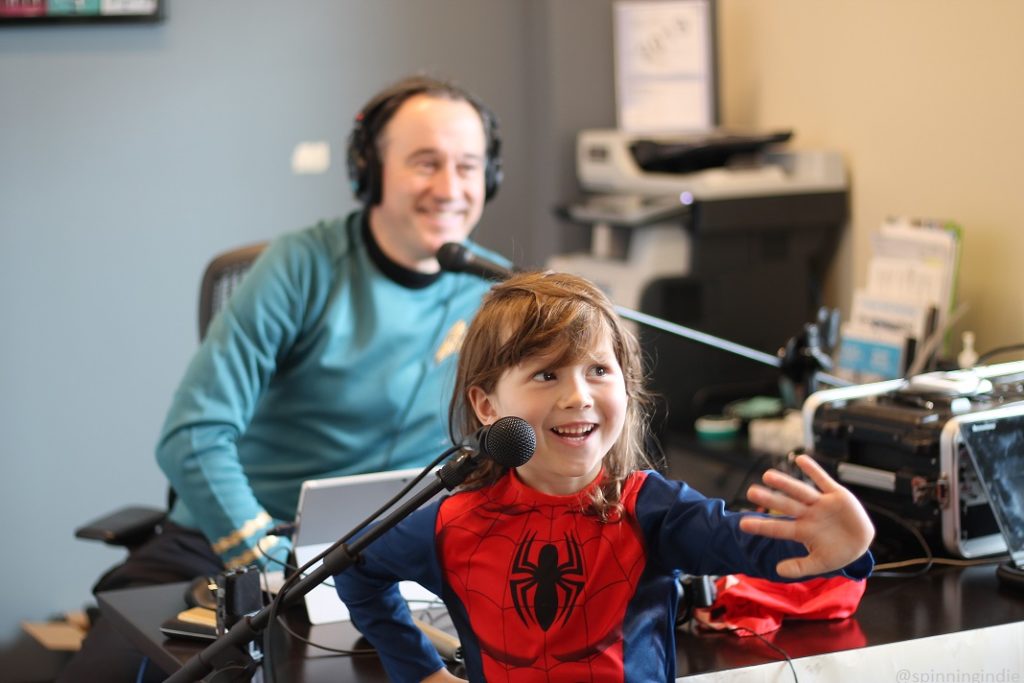
While both the parade broadcast and the Shack speak to KBFG’s community outreach, back in October much of the production of radio shows was taking place inside the homes of DJs and show hosts. With a mix of music and public affairs programming, KBFG’s local-focused mission extends to the artists played over the airwaves. When there isn’t a live DJ, the station plays a curated mix of music, with 80% of it from Seattle artists and 20% from musicians from other states in the Northwest. Russell told me that by October, 2018, the station had already acquired music from 5,000 artists in Seattle alone. During my visit, the music collection was largely digital, with not much room for a physical music library of records or CDs in the Shack (although I did spot a few vinyl LPs).
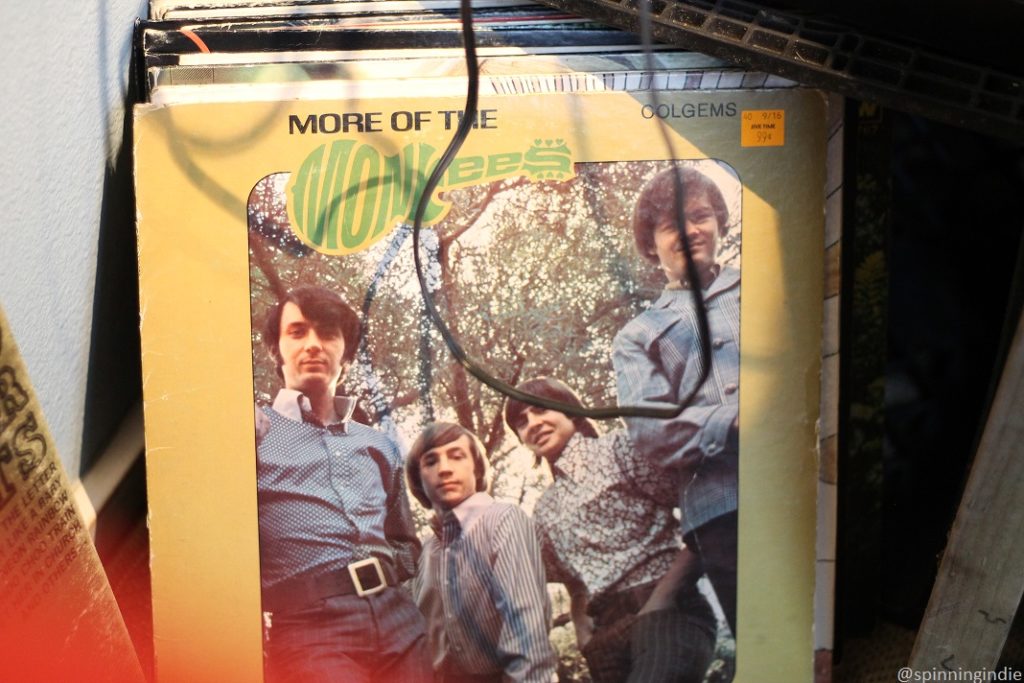
Russell and Burton were among the group of folks who worked to bring KBFG to the airwaves. While Russell’s radio experience was limited to a stint at his high school station many years ago; Burton worked at Pacifica Radio in Los Angeles for close to 20 years in numerous roles, including Director of the Pacifica Radio Archives.
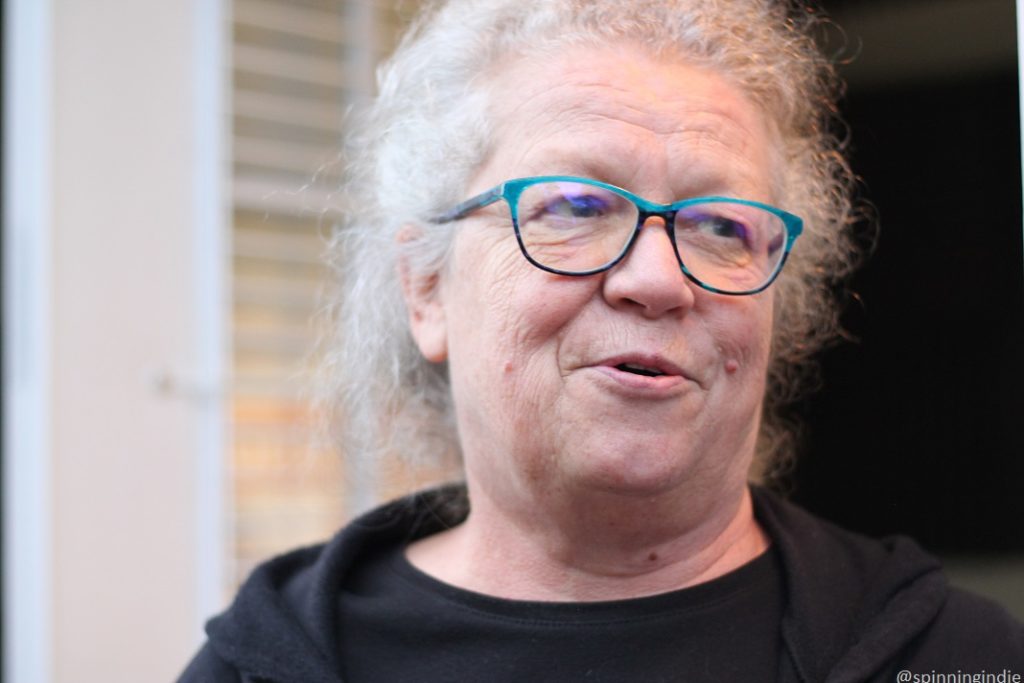
Burton’s work at Pacifica as both a radio producer and archivist informs her current programming on KBFG, as she regularly combs the archives to use on her “You Heard it Here” program, drawing links between current events and historical material. She’s pulled clips from a wide range of past programs, with topics covering everything from feminism to vampires.
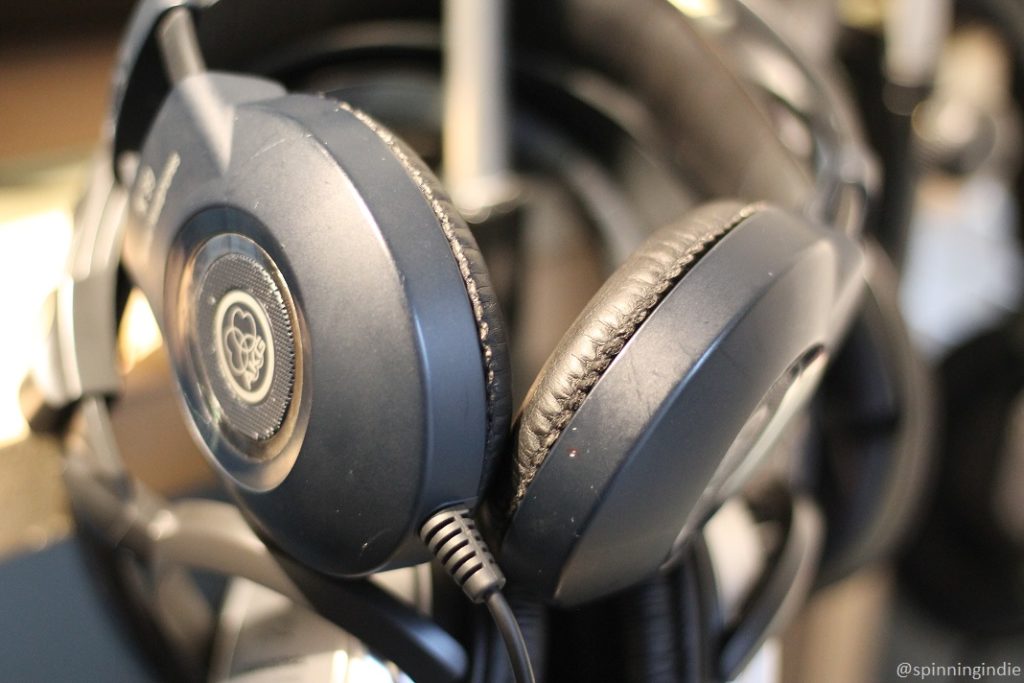
Excited about both the current group of KBFG-LP volunteers and the possibilities of collaborations with Seattle institutions and venues, Burton told me that she was looking forward to having more people involved with the station, adding, “everybody’s invited to come and play.”
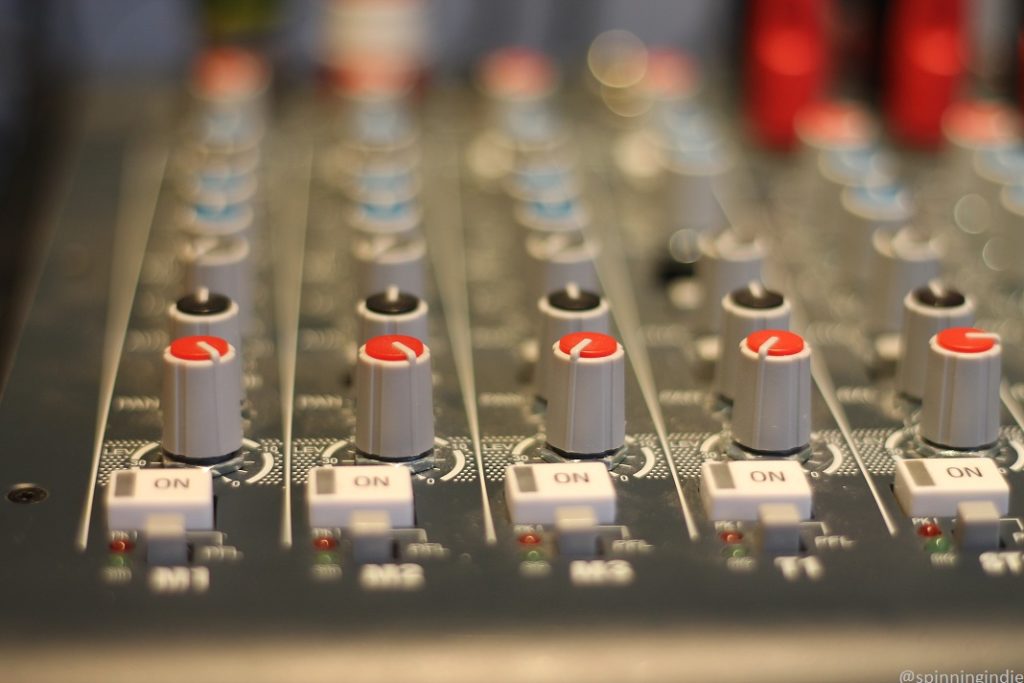
In March, 2019, KBFG moved to its new home, complete with studio and office, leaving the Shack behind. Its new headquarters, The Jack Straw Cultural Center, holds a special place in community radio history, having been established with funds from pioneering Seattle radio station KRAB (hear about the KRAB Archives on Radio Survivor Podcast #134). Over email, Burton relayed the exciting news:
Our new digs are in the Jack Straw Cultural Center which was built from funds earned when KRAB radio’s frequency was sold in 1984. There are production studios down stairs as well as performance spaces which we plan to use for live broadcasts. For now we are training new programmers in our studio/office including a Monday night session at 7pm called Office Hours when program director Tim Flanagan goes on the air inviting people to come in and learn how to do radio.
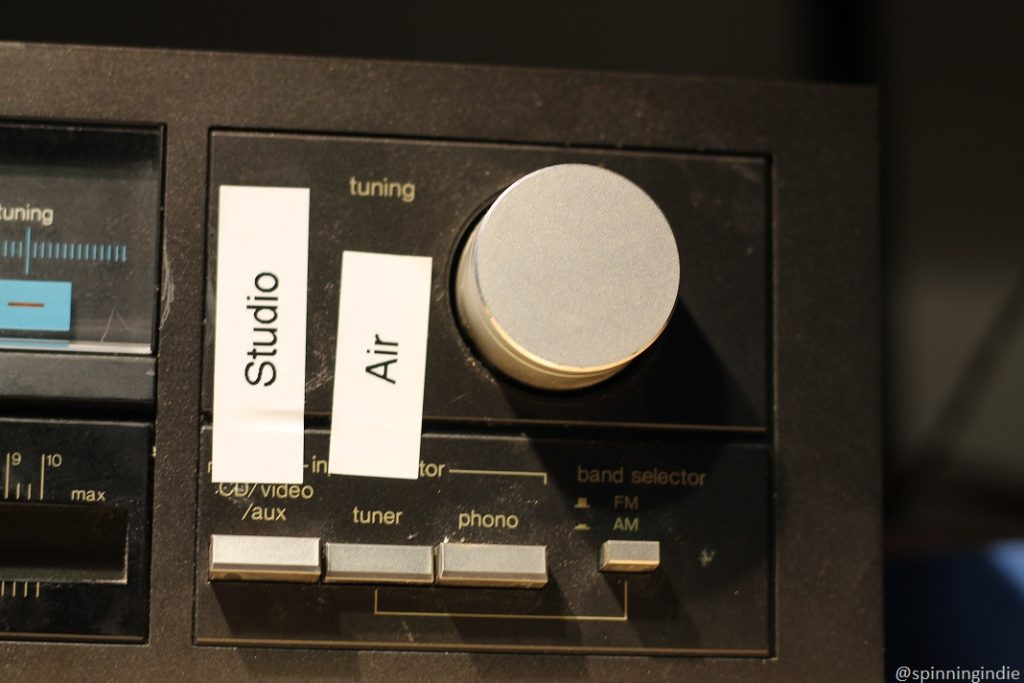
Thanks so much to everyone at KBFG for sharing your station with me. This is my 158th radio station tour report, my 33rd community radio station tour, and around my 21st LPFM tour. Read of my radio station tours in numerical order or by station type in our archives.

